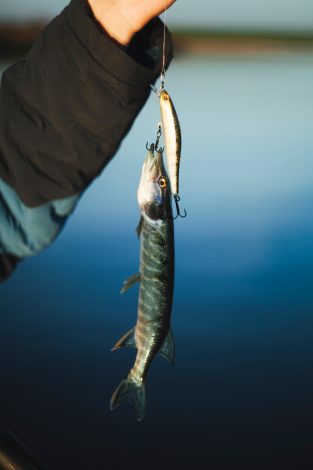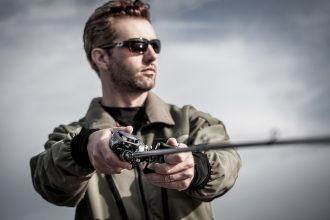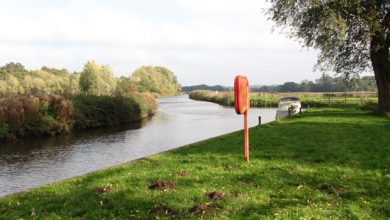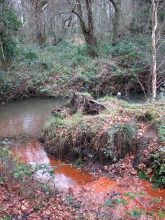Pike Fishing Guide To Help You Catch Fish

Norfolk Broad Pike Fishing
Introduction to Pike Fishing
Norfolk Broads Pike fishing is a popular sport enjoyed by people all over the world. In this guide, we’ll cover everything you need to know about pike fishing—from understanding the fish itself to choosing the right equipment and techniques.
Understanding Pike
Before going to the Norfolk broads pike fishing, it’s important to know some basic information about these fish. Pike are predatory fish that can grow to be quite large, with some reaching lengths of up to 4 feet or more. Their elongated bodies and sharp teeth help these creatures swim quickly through the water. Pike are typically found in freshwater habitats, such as rivers, lakes, and ponds.
Essential Equipment for Pike Fishing
Below, is a guide to what you will need to get started. Most people will fish 2 rods – This is the maximum amount of rods allowed with the most commonly used fishing licence. Most people will also take a light lure rod just to keep themselves busy if you didn’t want two rods out.
Rod
For dead baiting for Pike, it is recommended to use a rod that is 12ft in length and has a test curve between 2 and 3lb. Even though this may seem like a strong rod, it is essential to cast a heavy rig a considerable distance. A dead bait ledger rig can weigh several ounces, so a sturdy rod is required. The price range of rods can vary from €35 to ludicrous amounts. It is advisable, to begin with standard gear and then upgrade to rods that fit your style when you become more familiar with it. When selecting rods for Pike fishing, it is best to choose either Pike or carp rods. Dedicated Pike rods typically have a stiffer tip to handle varying bait sizes and weights, but a decent carp rod can suffice as long as the weight and cast are not excessive. For lure or drop-shotting fishing styles, there are lighter rods available that are more sensitive to bites.
Reel
You can utilize any reel that has a bait runner or free spool feature, is a suitable size, has an extra spool, and operates smoothly. My personal preference is for a front drag, but this may not apply to everyone. Front drag refers to the position of the drag feature on the reel, either on the front, top, or bottom. If I had to suggest investing more money into one aspect of this article, it would be the reel. Although you can splurge on high-end reels, I recommend spending around £30-£60 for a decent one.
Line
When it comes to fishing for Pike, I always opt for a braided line due to its lack of stretch, which makes it ideal for hook-setting. Since the rivers I fish typically have gentle banks and floors without any abrasive stones or rocks, I can consistently utilize 60lb braid. Of course, if the location was particularly prone to snags, I would adjust the line’s strength accordingly.
Wire Trace
In order to prevent the Pike’s teeth from damaging the hook length, a trace composed of multi-strand wire is utilized. After years of fishing for Pike, I have concluded that a 20-30lb trace wire is the most suitable for constructing my traces. While pre-made traces are available, I now prefer to create my own. Lately, many anglers have been using thick monofilament as a trace. Though I have not personally experimented with heavy mono, it might be a viable option and also gentler on the fish. Ultimately, the decision of which trace to use is up to you.
Swivels and Snap Swivels
There is a vast assortment of swivels available in various shapes and dimensions. It took a while, but I eventually discovered the suitable swivels for my pike angling arrangement. Specifically, I prefer the Berkley size 7 swivels, which are rated at 60 pounds. I utilize them exclusively for all my pike rigs.
The Hooks
The use of treble hooks for dead baiting is widespread and highly favoured. The hooks, usually two in number and position according to the size of the bait, can either be sold pre-made with a sliding second hook or custom-tied to the trace. However, these hooks are prone to shifting during casting and may end up too close together inside the mouth of a Pike, making removal a challenging task. Similar to swivels, there is a vast selection of treble hooks available on the market. Although they serve the same purpose, it is recommended to experiment with different brands to find the most effective one suited for your needs.
Floats
I employ a variety of inline floats, both on the surface and below for float-ledgering, but for drift fishing, I stick to the classic Pike bung.
Weights.
When it comes to lingering and float legering, I prefer to utilize flat pear leads in weights of 1, 1.5 or 2 ounces. In addition to these, I like to have a selection of drilled bullets that can slide onto the fishing line, providing extra weight for my inline floats. These same bullets can also prove useful when attempting to wobble or twitch bait. I always make sure to have on hand swan shots, beads and float stops as well.
A Weak Link
Forceps Pliers and Side Cutters
I have about 4 different sizes. I recommend some large 28cm ones and as many other sizes below as you can. As long as you have the largest ones, you should be covered.
Landing Net and Mat
I utilize a landing net with a 36-inch diameter and a spreader block. The net arms are detachable from the block, allowing for effortless transportation and weighing of the caught fish. While my unhooking mat may be basic, it is a vital accessory for guaranteeing proper fish care. It can easily be rolled up and secured to my bag, so it is highly recommended to obtain one.
Bite Alarms
Sharpe Knife and Bait
Dress Appropriately
While fishing for Pike on the shore, the temperature can drop drastically. Therefore, to make my pike fishing experience comfortable, I rely on my clothing. My pike fishing ensemble includes an outer layer that is windproof and waterproof, along with warm layers underneath. To keep myself even warmer, I like to wear a balaclava, a neck warmer, and a woolly hat. However, I prefer not to wear gloves as they hinder my fishing experience. Thermal winter suits are another option that I find very helpful. Although pricey, if you prioritize comfort and want to avoid shivering, I recommend investing in one.A mobile approach will give the best results. If using deads, move on every half hour or so but extend this to an hour if you catch. Another pike may well be in the same area. Read on for more top tips on how to find big pike. Improving your catch rate greatly depends on understanding the behavior of river pike.
These predators seldom stray too far from their next meal, often lurking in wait near overhanging trees with submerged roots or near bridges and other structures that provide cover for their prey fish, such as roach, especially in winter when they may form large groups. Some areas, like weirs, outlets, or junctions, may present a combination of features that create “hotspots” and hold a good supply of fish all year round, making them ideal for finding big pike.
To optimize your chances of success, it’s best to adopt a mobile approach. If using dead bait, move on every half hour or so until you catch something. Once you’ve made a catch, consider extending your stay by an hour as there may be more pike in the surrounding area. For additional helpful tips on how to find big pike, keep reading.
Bigger Baits Can Work
This is why they are renowned for taking large baits in obvious preference to smaller ones in fast-flowing rivers such as the Idle or Trent. I prefer to use whole mackerel, sardines and lamprey of at least a foot long and make up special traces for these larger baits.
Pike fish are not inclined to swim against strong currents because of their lazy nature. Instead, they utilize the current to their advantage by easily swimming downstream to the next ambush point. They prefer to stay in calm water beside the main flow to take advantage of the turbulence and prey passing by.
To avoid the rush of strong currents, pike fish look for suitable habitats like drops-offs where they can lie at the bottom of the ledge while still being in the main river. River pike, in particular, are not fond of chasing small meals as the benefits are not worth the energy required to catch them. Hence, for fast-flowing rivers like Idle or Trent, pikes prefer larger baits like whole mackerel, sardines or lamprey that are at least a foot long. To catch these bigger baits, special traces are made.
Spotting Underwater Features
Underwater characteristics abound in rivers and can be easily identified by examining surface features. These can aid in the discovery of large pike habitats. As a river winds, it picks up sediment from the outer curves, deepening channels, and depositing sediment on the inner curves to produce shallower zones. Usually, resident pike can be found in the deeper channels, resting on the bottom to launch attacks on prey passing overhead.
By measuring the depth through bait counting, you can identify underwater elements like deep holes and ledges, allowing you to choose the perfect place to drop your bait for fishing. Slack water zones, such as bays, dykes, islands or man-made structures, provide ideal spots for catching large pike. Similarly, eddies formed by river currents create a suitable and slower-paced current in the opposite direction, becoming favourable sites for pike lurking.
Techniques for Pike Fishing
When fishing for pike on the Norfolk Broads, there are several techniques to choose from. You might find that one technique works well at certain times but not as well at other times. Keep trying different things until you’re consistently catching fish!
There is one thing I like to do. I always bring a couple of pints of maggots with me. Every so often I spray some out over my bait, which draws the smaller fish in and hopefully, the pike follows.
Dead Baiting for Pike
The practice of dead baiting in fishing entails using a lifeless fish as a lure. This involves attaching treble hooks to a wire trace and throwing it into the water to attract specific fish. To perform this technique, fishermen must possess knowledge about the behaviour of the targeted species as well as appropriate gear suited for their size and force. It is a widespread fishing method that is applicable year-round, but more productive during colder months when fish are sluggish and on the lookout for effortless prey.
Live Baiting for Pike
Live baiting is a prevalent fishing technique used to catch pike and perch in rivers. The practice of using live bait in freshwater can be a contentious issue, and therefore, it is important that anglers comply with ethical guidelines and ensure that the live bait is well-cared for and released unharmed when not in use. To engage in live baiting, one must possess a profound understanding of the habits of the intended fish, and have access to suitable equipment such as a float or ledger rig to present the bait in the water. In the UK, minnows, roach, and small perch are the most commonly used live bait. Although live baiting can be an efficient way to catch fish, anglers must bear the responsibility of being environmentally conscious and cognizant of the welfare of the live bait.
Dropshotting for Pike
Dropshotting is a technique that involves using just a weight and a hook sticking out horizontally. The bait is suspended off the bottom of the water.
This technique can be very effective when fishing for pike on the Norfolk Broads, as it allows the bait to move naturally through the water and can help you target specific areas where the fish are likely to be hiding. You can also change the depth very quickly, which is a huge advantage.
You have to bear in mind though, you can’t really put huge soft plastics on the hook and often attracts perch.
Lure Fishing for Pike
Pike can also be caught through the use of artificial lures. This technique mimics fish bait or small mammal movements, which are common pike prey.
The idea is to cast the bait out and reel it in with different techniques. The fish will essentially attack the lure. Make sure you use a wire trace to prevent Pike from biting through the line
A variety of lures will attract pike in a variety of conditions, including shallow weed beds and deeper waters. Spoons, spinners—even soft plastics are all good choices.
Make sure you bring a good variety of lures and swap and change around until you find one that works for that day. Each day is different, but you’ll find your favourites.
Locations for Pike Fishing on the Norfolk Broads
The Norfolk Broads is a popular destination for pike fishing. Some of the best locations include the River Ant, River Bure and Hickling Broad—but there are plenty more to be found! It’s best to hire a day boat.
In the areas where pike fishing is popular on the Norfolk Broads, there is plenty of vegetation and cover for these fish as well as deep waters and drop-offs. When choosing a location to fish for pike, it’s important to consider conditions such as these—as well as the time of year—to increase your chances of success.
Best Time of Year for Pike Fishing on the Norfolk Broads
Pike fishing on the Norfolk Broads is best during autumn and winter when water temperatures are cooler. During the months listed above, the pike is more likely to be found in deeper waters and near drop-offs—places where water depth suddenly changes.
However, pike fishing can be successful year-round on the Norfolk Broads, depending on the conditions and the techniques you use. Please note, on the Norfolk Broads, there are many little boatyards. Most of the small fish find their way to these boatyards and therefore can produce pike regularly. The water is slightly more sheltered from the conditions. Don’t count out the open water though as there are beasts to be had
FAQs
Q: What is the best bait to use for pike fishing on the Norfolk Broads?
A: The best bait to use for pike fishing on the Norfolk Broads depends on a variety of factors, including the time of year, the location, and the size of the fish you’re targeting. Dead bait and live bait are both effective options, as are artificial lures.
Q: What type of equipment do I need for pike fishing on the Norfolk Broads?
A: You’ll need a fishing rod, reel, line, hooks, and bait or lures. When choosing your equipment, it’s important to consider the size of the fish you’re targeting and the type of fishing you’ll be doing.
Q: Is pike fishing on the Norfolk Broads safe?
A: It’s safe to go pike fishing on the Norfolk Broads if you follow basic safety guidelines, such as wearing a life jacket (if on a boat) and being aware of your surroundings. It is also important for anglers to observe any local regulations regarding fishing—and carefully release fish alive after taking them out of water. Make sure you wrap up warm as it gets pretty cold during the winter months.
Conclusion
Pike fishing on the Norfolk Broads can be a thrilling and rewarding experience—whether you’re an angler of advanced skill or just getting started. Let us know in the comments how you got on with your pike fishing.




